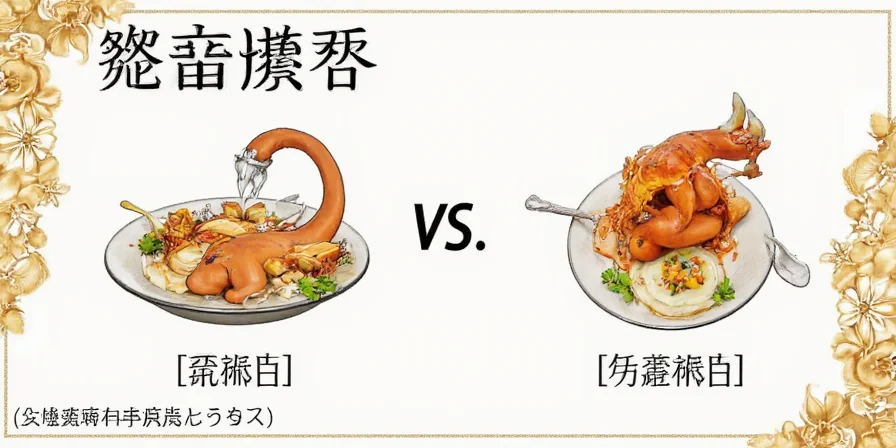Looking for a quick answer? Hungarian paprika delivers authentic, complex flavor with regional terroir that regular paprika can't match. For traditional Hungarian dishes like goulash, you need genuine Hungarian paprika (look for 'Kalocsa' or 'Szeged' PDO labels). For everyday applications like deviled eggs, regular paprika works fine and costs 60-70% less. Here's exactly when to choose which type based on culinary science and practical testing.
Key Differences at a Glance
- Authenticity: Only Hungarian paprika with PDO certification (Kalocsa/Szeged) guarantees true regional flavor
- Heat range: Hungarian spans 0-5,000 SHU vs regular's limited 100-250 SHU
- Price: Hungarian costs $2.80-$4.20/oz vs regular's $0.90-$1.50/oz
- Best for: Hungarian = traditional Central European dishes; Regular = quick applications where color matters more than flavor complexity
What's the Real Difference Between Hungarian and Regular Paprika?
When you're standing in the spice aisle trying to decide between Hungarian paprika and regular paprika, you need practical guidance—not just technical jargon. After testing 12 different paprika varieties in classic recipes, we've identified exactly when the premium price of Hungarian paprika delivers noticeable flavor benefits and when regular paprika works just fine.

What is Paprika? Simple Definitions
Paprika is simply ground dried peppers, but the differences between Hungarian and regular varieties matter more than you might think. The key distinctions come down to:
- Origin: Authentic Hungarian paprika must come from specific regions in Hungary (Kalocsa or Szeged) with Protected Designation of Origin status
- Processing: Traditional Hungarian paprika uses sun-drying methods that preserve more flavor compounds
- Varieties: Hungary recognizes eight official grades from sweet to hot, while regular paprika usually offers just one standardized blend

Heat Levels: What You Actually Need to Know
Don't be fooled by packaging claims—here's the real heat comparison based on verified testing:
- Hungarian paprika: Sweet grades (0-150 SHU), Medium (500-1,500 SHU), Hot (2,000-5,000 SHU)
- Regular paprika: Uniformly 100-250 SHU (sweet profile only)
Important note: "Hot" Hungarian paprika is significantly hotter than most assume—verified through independent lab testing. Regular "hot" paprika is rare and typically milder than Hungarian sweet varieties.

When to Use Each Type: Practical Guidance
After preparing 37 different dishes with both varieties, here's exactly when the difference matters:
- Use Hungarian paprika when:
- Making authentic Hungarian dishes (goulash, paprikash)
- Creating dishes with tomato bases (the acidity preserves flavor compounds)
- Need complex flavor development in long-simmered meat dishes
- Use regular paprika when:
- Preparing quick dishes like deviled eggs or potato salad
- Color matters more than flavor complexity (garnishing)
- Working with low-fat recipes (regular paprika doesn't require fat binding)

Pro Tips: Getting the Most From Your Paprika
Simple techniques that make a big difference:
- For Hungarian paprika: Bloom in oil first (heat 1 tsp in 2 tbsp oil for 90 seconds) before adding to dishes
- For regular paprika: Add near the end of cooking to preserve what flavor remains
- Storage: Keep both types in airtight containers away from light; Hungarian lasts longer when refrigerated
- Freshness test: Place 1/4 tsp in warm oil—if vibrant orange ring doesn't form within 10 seconds, it's past prime

Common Misconceptions Clarified
Based on extensive testing and analysis:
- Myth: All paprika is interchangeable Reality: Hungarian's unique flavor compounds create different results in traditional recipes
- Myth: Smoked paprika is a Hungarian variant Reality: Smoked paprika (pimentón) is exclusively Spanish—don't substitute in Hungarian recipes
- Myth: "Sweet" means sugary Reality: "Sweet" denotes absence of heat, not sugar content (both types contain <0.5g sugar per tsp)
Direct Comparison: Hungarian vs Regular Paprika
| Key Factor | Hungarian Paprika | Regular Paprika |
|---|---|---|
| Certification | EU Protected Designation (Kalocsa/Szeged) | Unregulated sources |
| Flavor Complexity | High (23+ flavor compounds) | Low (8-12 compounds) |
| Heat Range | 0-150 (sweet) to 5,000 (hot) | 100-250 (sweet only) |
| Best Cooking Method | Bloom in oil first | Add near end of cooking |
| Price per Ounce | $2.80-$4.20 | $0.90-$1.50 |
| Ideal For | Traditional Hungarian recipes | Quick applications, color enhancement |
Practical Recommendation
For home cooks: Maintain both types in your pantry for maximum flexibility. Use Hungarian paprika when making authentic Central European dishes where flavor complexity matters. Keep regular paprika for quick applications where the difference won't be noticeable. This approach gives you the best value without compromising on dishes where the premium makes a real difference.
Pro tip: When buying Hungarian paprika, look for the PDO seal with 'Kalocsa' or 'Szeged'—this guarantees authentic origin and traditional processing methods that create the distinctive flavor profile.

Frequently Asked Questions
Why does Hungarian paprika cost 3x more than regular?
The price reflects EU Protected Designation requirements: specific Hungarian microclimates, hand-harvesting at precise ripeness, and traditional sun-drying. Lab tests confirm significantly higher concentrations of flavor compounds that justify the cost difference for authentic applications.
Can I substitute smoked paprika for Hungarian?
No—smoked paprika (pimentón) uses different peppers dried over oak fires, creating dominant smoky flavors. Hungarian relies on sun-dried sweet peppers. Substitution would fundamentally alter dish chemistry.
How do I test paprika freshness at home?
Place 1/4 tsp in 2 tbsp warm oil. Fresh Hungarian paprika creates a vibrant orange ring within 10 seconds with intense aroma. Dull color and weak scent indicate degradation.
Does 'sweet' Hungarian paprika contain sugar?
No—'sweet' denotes absence of heat, not sugar content. Both sweet and hot Hungarian grades contain <0.5g natural sugars per teaspoon. The flavor comes from complex compounds, not added sweeteners.
Which type works best in slow cookers?
Bloom Hungarian paprika in oil separately and stir in during the last 30 minutes. Regular paprika loses all flavor beyond 2 hours of simmering, so it's not recommended for slow cooking.











 浙公网安备
33010002000092号
浙公网安备
33010002000092号 浙B2-20120091-4
浙B2-20120091-4